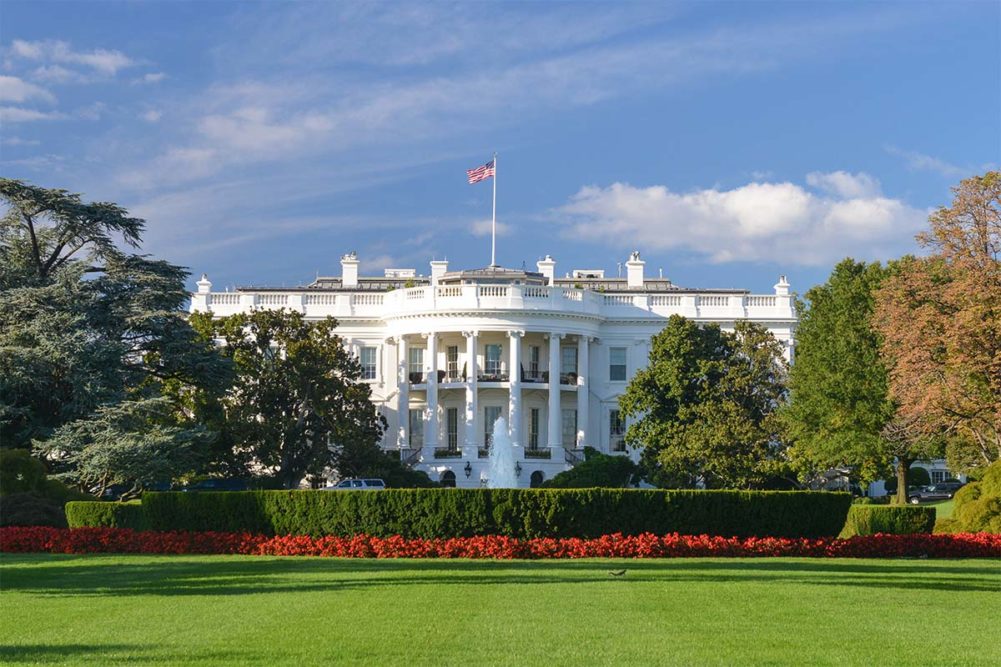KANSAS CITY, MO. — With the presidential election quickly approaching, voters seemed mixed on which candidate may best support US agricultural interests at home and abroad. Recent surveys of both candidates and constituents, along with industry analytical studies, cast a sharp spotlight on this ballot conundrum.
An early October survey sampling nearly 5,000 farming community members indicated a significant preference for former President Donald Trump’s planned agricultural policies over Vice President Kamala Harris’s proposals regarding farm programs, international trade, biofuel policies and strategies for controlling domestic inflation.
Even a majority of responses from all seven swing states (Georgia, Nevada, Wisconsin, Michigan, Arizona, Pennsylvania and North Carolina) showed a partiality for a future Trump administration. Survey responses in favor of Harris showed support for her policies surrounding environmental regulations, renewable energy, farm workers’ rights and food and nutrition programs. But responses favoring a Harris administration’s approach to agriculture averaged only about 24%, compared with 76% indicating support for Trump’s proposed approach.
Both candidates have the unique position of enacting and experiencing past policies that have directly impacted American agriculture. With respect to their proposals for the upcoming administration period, a separate survey polling agricultural economists in September showed neither candidate was promoting policies that would broadly benefit US agriculture from an economic perspective, but Trump’s policies were viewed more harmful for the ag sector compared with those of Harris.
Looming large over both administrations is the potential for ensuing trade wars, especially with China, which is the world’s leading importer of many agricultural commodities, including US soybeans. In 2018, then President Trump imposed a series of tariffs on more than $30 billion worth of Chinese products that prompted multiple retaliatory Chinese tariffs against US imports, specifically of US agricultural products.
The US soybean market was considerably impacted during the 2018 trade war. Total soybean exports from the United States dropped 18% from 2.13 million bushels in 2017-18 to 1.75 million bushels in 2018-19, with US soybean exports to China dropping about 70%. The price of soybeans tumbled $2 per bushel, and the total loss to US agriculture during this period was more than $27 billion, with soybeans accounting for 71% of those annualized losses.
During this time, China began massively importing soybeans and other agricultural goods from Brazil, which helped cement that nation’s status as an agricultural powerhouse, where it remains today. In its December 2018 World Agricultural Supply and Demand Estimates report, the US Department of Agriculture estimated 2017-18 Brazilian soybean production at 120.30 million tonnes, with exports at 76.20 million tonnes.
For the United States, 2017-18 soybean production was estimated at a comparable 120.04 million tonnes, with exports at 57.95 million tonnes. In the latest WASDE, the USDA estimated 2023-24 Brazilian soybean production at 153 million tonnes, 26% higher than during 2023-24, with US soybean production at 113.27 million tonnes, down 6% from 2017-18. But Brazilian exports for 2023-24, which were estimated at 104.17 million tonnes, were 56% higher than in 2017-18, compared with soybean exports from the United States at 46.13 million tonnes, down 20%.
In late 2019, the Trump administration initiated a plan to resolve trade conflicts with China that was carried through the Biden administration, and China began importing US soybeans at pre-trade war levels, but it failed to completely honor its purchasing agreement with the United States, and Brazil has remained China’s top soybean supplier.
In their current campaigns, the rhetoric for imposing additional tariffs on trade partners continues. Trump has pledged to impose an additional 60% tariff on Chinese imports and a 10% to 20% tariff on other imported goods from other countries. Trump also said he would apply a 200% tariff on imports of John Deere equipment manufactured in Mexico. Harris’s approach is more vague, but she asserts her administration will enact policies that diplomatically manage the economic and security threats related to China’s unfair trading practices, which include undercutting the market value of premium goods, stealing foreign companies’ technology and providing commercial advantages solely to Chinese manufacturers.
A recent study commissioned by the American Soybean Association (ASA) and the National Corn Growers Association and conducted by the World Agricultural Economic and Environmental Services indicated a new trade war might once again slash US agricultural commodity exports, cause the price of corn and soybeans in the United States to plummet, and degrade rural communities and economies while financially benefiting South American markets.
Earlier this year, Josh Gackle, president of the ASA, testified to the US House of Representatives about the impact on the industry if trade relations with China are not maintained. China remains the top buyer for US soybean supplies, with nearly one in three rows of soybeans grown in the United States destined for China. The USDA estimated 2023 US soybean exports to China were valued at $15.06 billion, with the next destination (European Union) valued 77% lower at $3.45 billion.
Still, polls show many voters, especially those residing in agricultural communities, support Trump’s 2024 platform for agricultural policies, including an increase in tariffs. But the effect of those tariffs, if imposed, as well as the result of the presidential election itself, remains to be seen.


